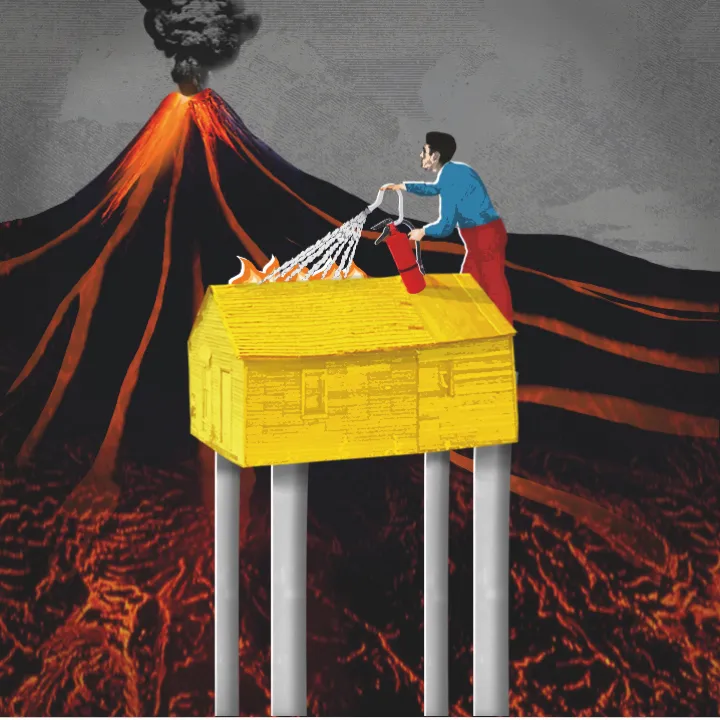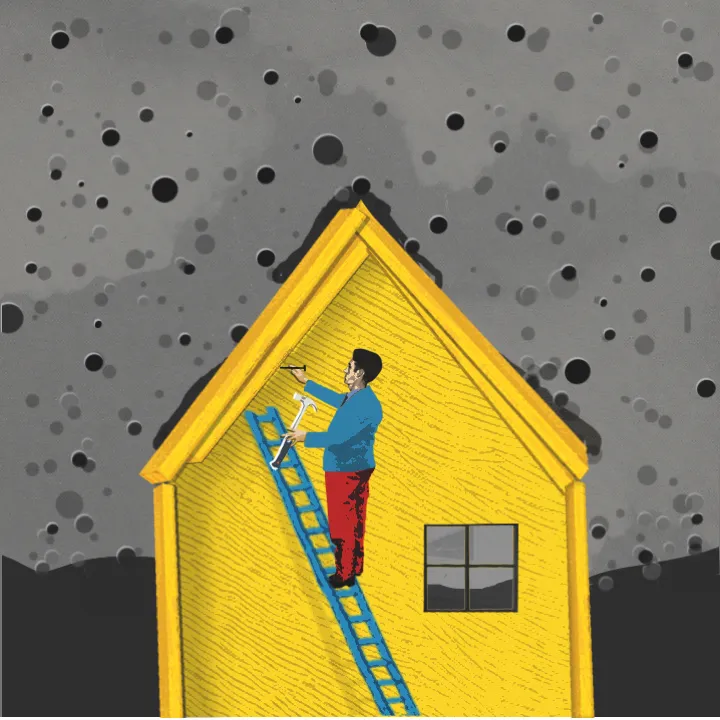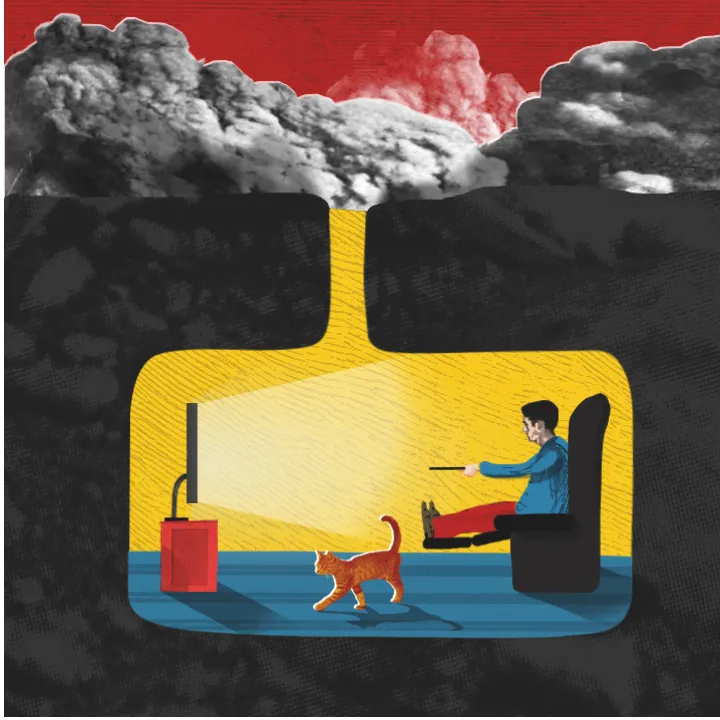1. LAVA FLOWS

Hawaiian and Icelandic volcanoes produce slow-moving lava. Lava temperature is 700-1,200°C, so it melts or ignites most things.
A house on stilts of titanium or tungsten might survive, if the stilts were strong enough to withstand the lava pushing against them.
2. AIRBORNE ASH

Violent volcanoes, such as Vesuvius and Mount St Helens, tend to explode and throw up several cubic kilometres of ash and rock. A 30cm-thick ash layer can be heavy enough to cause roofs to collapse, so you’ll need a reinforced roof with a steep pitch to stop the ash building up too much.
3. POISONOUS GAS

After an eruption, pyroclastic flows can engulf a town in superheated steam and poisonous sulphur dioxide or asphyxiating carbon dioxide. To escape this, you’ll need an airtight home with an air supply – preferably underground. But ensure your access hatch doesn’t get blocked!
Read more:
- The thought experiment: What would happen if the supervolcano under Yellowstone erupted?
- What makes the rock inside volcanoes so hot?
Subscribe to BBC Focus magazine for fascinating new Q&As every month and follow @sciencefocusQA on Twitter for your daily dose of fun science facts.